How Indie Comics Are Redefining Visual Horror Experiences
The Rise of Indie Comics in Horror Genre
Indie comics have carved a distinctive niche in the horror genre by merging art and storytelling in ways that disgust and fascinate, pushing creative boundaries to new heights. Visionaries like Shintaro Kago have redefined body horror, delivering surgical precision in grotesque imagery that challenges perceptions. Kago’s role in the evolution of horror comics is echoed in titles that delve into psychological and visceral terror. Josh Simmons, often regarded as the king of bleak horror comics, explores despair and existential dread with haunting art and narrative depth.
Meanwhile, Johnny Ryan, considered the last true underground cartoonist, disrupts conventions with unapologetic brutality and satire. Creators like Simon Hanselmann use works like “Megg & Mogg” to capture millennial malaise, blending absurdity with darkness. Spine-chilling horror artbooks and graphic novels in today’s indie scene often rival the top 5 visual horror experiences in modern comics. Through raw authenticity, these creators redefine visual horror, inviting audiences to explore chilling tales that linger far beyond the final page.
Breaking Traditional Boundaries: Unique Narratives in Indie Horror Comics
Indie horror comics continue to disrupt conventional storytelling, offering narratives that disgust and fascinate while redefining creative boundaries. Artists like Shintaro Kago have pioneered body horror with surgical precision, exploring grotesque themes that challenge readers’ perception of normalcy. His role in the evolving horror comic genre remains pivotal, blending surrealism with visceral terror.
Josh Simmons, widely regarded as the king of bleak horror comics, crafts unrelentingly dark tales, while Johnny Ryan channels underground energy, ensuring his work remains anarchic and raw. Meanwhile, Megg & Mogg taps into millennial malaise with biting satire. These creators and their narratives showcase how indie platforms elevate horror into truly uncharted realms.
Artistic Freedom: Exploring Visual Innovations in Horror Illustration
Indie comics deliver visual shocks that both disgust and fascinate, establishing themselves as bold platforms exploring the creative boundaries of horror. Innovative artists like Shintaro Kago redefine body horror, blending surgical precision with surreal distortions to evoke profound unease. His role in the evolution of horror comics is pivotal, inspiring other creators to embrace grotesque yet thought-provoking illustrations. Comparatively, Johnny Ryan, celebrated as the last true underground cartoonist, employs chaotic visuals that challenge comprehension, diving into visceral terror. Meanwhile, creators such as Josh Simmons further establish indie horror’s niche, mastering bleak narratives with haunting styles. Each artist pioneers distinctive approaches, reshaping expectations for horror art.
The Role of Atmosphere and Tone in Indie Comics Storytelling
Atmosphere and tone serve as foundational elements in indie comics, particularly those that explore spine-chilling horror narratives. Comics that disgust and fascinate, like Shintaro Kago’s redefinition of body horror, utilize calculated pacing, shadowy visuals, and unsettling silences to immerse readers completely. This atmospheric depth is evident in the most haunting horror artbooks, where textures and contrasts evoke visceral reactions. Creators such as Josh Simmons, known as the king of bleak horror comics, lean into desolation and hopelessness, using muted tones and barren landscapes. Meanwhile, Johnny Ryan’s raw, underground style sets a chaotic, uncompromising tone, cementing his reputation as the last true underground cartoonist.
Diversity and Representation: A Spotlight on Inclusive Horror Tales
Indie comics have increasingly embraced diversity, offering a broader spectrum of experiences within the horror genre. Artists like Shintaro Kago, known for redefining body horror, inject cultural nuance and philosophical depth into his surgical, grotesque depictions. Similarly, Johnny Ryan, often dubbed the last true underground cartoonist, challenges societal taboos while blending subversive storytelling with raw artwork.
Creators explore untold perspectives, such as how Megg & Mogg brilliantly encapsulates millennial malaise amidst surreal horror narratives, or how Josh Simmons’ bleak horror comics leverage existential struggles to terrify. These inclusive storytelling methods deepen reader engagement, pushing boundaries with both imaginative and truly haunting visual experiences.
The Future of Visual Horror: Lessons from the Indie Comic Movement
The evolution of indie comics has created a pivotal space where disgust and fascination intertwine, pushing creative boundaries and reshaping visual horror. Iconic figures like Shintaro Kago have revolutionized body horror, delivering narrative experiences that feel surgical in their precision and discomfort. Kago’s artistry has inspired creators across the medium, solidifying his influence on the genre’s future. Similarly, Josh Simmons, lauded as the king of bleak horror comics, delves into harrowing psychological landscapes, offering audiences emotionally raw narratives. From Johnny Ryan’s unapologetic underground works to the satirical despair of Megg & Mogg, indie comics challenge mainstream trends, ensuring the genre thrives in unexpected ways.

